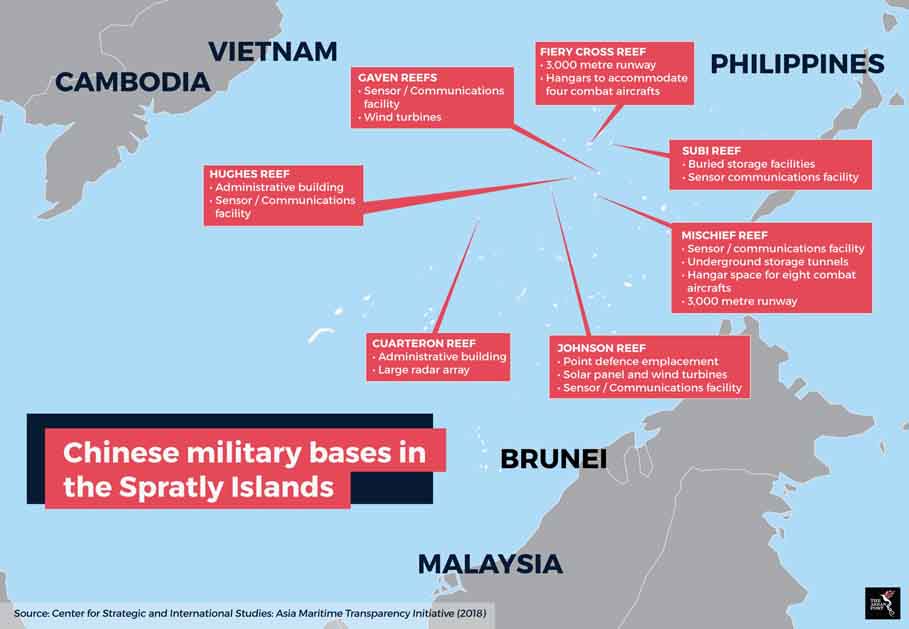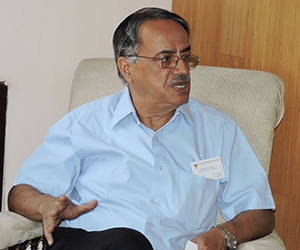The 32nd edition of Association of South East Asian Nations (ASEAN) Summit took place in Singapore in from 25-28 April where the central theme of the meeting was envisioned as ‘Resilient and Innovative ASEAN’. While the South East Asian leaders’ discussions revolved around establishment of ASEAN Smart Cities Network, Cyber Security Cooperation and how to improve many other cooperative mechanisms, there were also deliberations the question of adopting Code of Conduct (COC) with China in the South China Sea (SCS).
The communique issued after the Summit in the shape of Chairman’s statement devoted a long paragraph underlining ‘the full and effective implementation of the 2002 Declaration on the Conduct of Parties in the South China Sea (DOC) in its entirety’. The concerns on land reclamation activities were expressed by some members (point to note, not all) and the need to pursue peaceful resolution of disputes in accordance with international law, including the 1982 UNCLOS. The importance of non-militarisation and self-restraint in the conduct of all activities by claimants and all other states that could further complicate the situation and escalate tensions in the SCS was also emphasised. However, there was no indication as to how ASEAN will move forward for an early conclusion of COC with China.
When in August last year the Foreign Ministers of South East Asian countries and China had adopted a ‘Framework of a COC’ to manage disputes in the SCS it was hoped that the actual COC could be given some shape by the end 2017. At the 31st ASEAN Summit at Manila in November, the South East Asian leaders and China had agreed to commence negotiations on the COC.
Leading up to this year’s ASEAN Summit, Senior Officials Meeting was held in the first week of March in Nha Trang City of Vietnam where a report on outcomes of the 23rd Meeting of the ASEAN- China Joint Working Group (JWG) on the implementation of the DOC between the Parties was presented. While the details of the report have not been made available to the public the Deputy Foreign Minister Dung of Vietnam spoke positively about the outcomes of the 23rd Meeting of the ASEAN-China JWG. However, he also suggested that during the next negotiations, countries need to agree that the COC is an open document based on the principles of international law, the 1982 United Nations Convention on the Law of the Sea (UNCLOS) and other related documents between ASEAN and China. The DOC of 2002 mentions solving of disputes peacefully based on UNCLOS and ‘refraining from action of inhabiting on the presently uninhabited islands, reefs, shoals, cays, and other features and to handle their differences in a constructive manner’.
Thus, it is quite evident that there has been little or no progress so far on the COC even while China has been making some positive noises about moving forward on the issue. According to some media sources that claim to have access to a leaked document, the framework of COC aims to promote “mutual trust, cooperation and confidence, prevent incidents, manage incidents should they occur and create a favourable environment for the peaceful resolution of disputes”. It also underlines that the COC is not an instrument to settle territorial disputes or maritime delimitation issues. Further, the Singapore's Foreign Minister Vivian Balakrishnan has observed that “This (Framework of COC) is an important document because it represents, in a sense, consensus and more important than that, a commitment on behalf of all the ten ASEAN states and China to make progress on this long overdue issue”.
While the ASEAN in its various joint communiques continues to call for non-militarisation of the SCS Beijing has blatantly ignored such calls and has continued with such activities. The latest being the installation of military communication jamming equipment at two places on the Spartly Islands in April this year. Therefore, this raises several questions like whether China’s offer of concluding a COC is just a ruse to buy some more time to expand and consolidate its militarisation efforts and whether COC will be a substantial and legally binding document. Further, is there really a consensus between the ASEAN members on issues pertaining to the SCS? If not, then how can the unity be forged between the ASEAN countries to address the SCS issue?
China has taken over 15 years to move from DOC of 2002 with ASEAN to the current negotiations on COC. While that itself could be seen as a degree of progress it could be also that this step is just a reaction to the Permanent Court of Arbitration (PCA) ruling given in the case of The Philippines versus China in July 2016. Even though the PCA award was rejected by China it resulted in adverse publicity about China’s coercive practices in the SCS including its militarisation activities. Thus, while China could attempt to improve its image by reaching an agreement on COC with ASEAN it would be inclined to not only delay its conclusion but also work on diluting the clauses that might impinge on its conduct so far exhibited in the SCS. In any case the COC will not be an instrument for resolution of sovereignty disputes.
It needs to be noted that China had ratified the UNCLOS in June 1996; however, in 2006 it had made a Declaration that it does not accept certain Articles and their sub clauses that pertain to the compulsory binding procedures for the settlement of disputes under the Convention with respect to certain specified categories and kinds of disputes. Such a Declaration is allowed under relevant rules but this, in effect, nullifies its adherence to UNCLOS of 1982 in a major way. This also indicates China’s intention to not stick to similar clauses in the likely COC. More the reason that the ASEAN countries need to evolve a joint and common approach and work together to include such clauses already agreed to in the DOC.
Further, the salutary impact of PCA judgment in contributing to the discourse on solving the SCS issue should not be underestimated. Adhering to international norms, freedom of navigation, over flight and unimpeded commerce remain the abiding principles besides peaceful resolution of any dispute. The PCA judgment is very methodical and detailed; it has gone into every aspect of the issues involved and thus provisions of the PCA award could have bearing on the finalised COC. Therefore, the ASEAN as an organisation needs to firmly stick to its much-cherished principle of its centrality while dealing with political, economic and security issues in the region. It needs to be remembered that China has been able to divide ASEAN especially on the SCS issue by offering allurements and inducements in the shape of economic benefits etc. as the past experience in case of Cambodia and Laos shows. While Beijing would again attempt to adopt a toothless and watered-down version of COC, ASEAN needs to maintain consensus and solidarity to bring into effect a legally binding and substantial COC that meets the interests of all concerned parties.
Singapore, as a Chairman and also coordinator for talks with China on COC is eminently placed to both present a united ASEAN front by building consensus as also to work out a modus vivendi on arriving at a legally binding COC with China. Like the theme of this year’s ASEAN Summit an ‘innovative and resilient’ solution is needed to bring into place a legally binding COC at an early date.
(The paper does not necessarily represent the organisational stance. The author certifies that the article/paper is original in content, unpublished and it has not been submitted for publication/web upload elsewhere, and that the facts and figures quoted are duly referenced, as needed, and are believed to be correct)
Image Source: https://theaseanpost.com/article/can-chinas-militarisation-south-china-sea-lead-armed-conflict-0











Post new comment